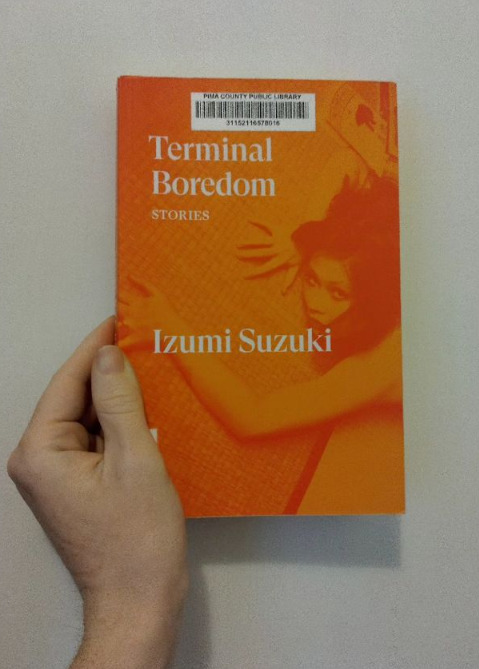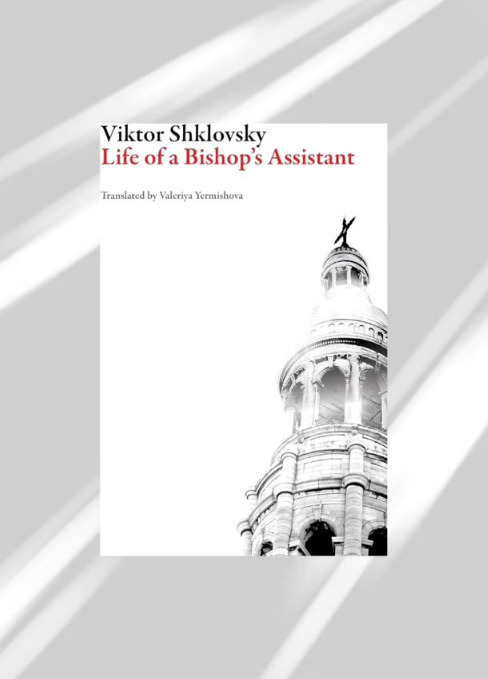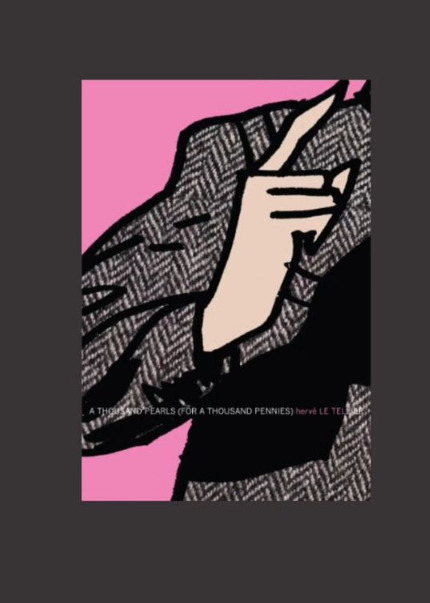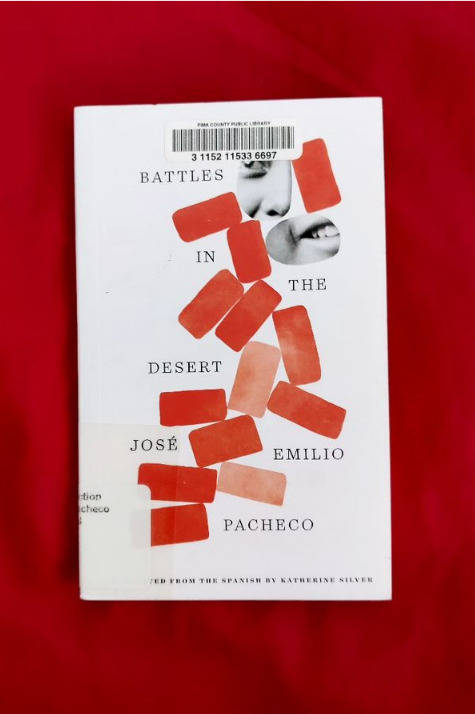#viktor shklovski
Text
Me has dado permiso para llamarte a las diez y media.
Cuatro horas y media y luego otras veinte horas vacías, entre ellas tu voz.
Mi habitación se me ha hecho abominable. Mi escritorio no me provoca ningún cariño; es el lugar donde solo escribo cartas para ti.
Aquí estoy, tan enamorado como un operador de telégrafos. (...)
Te escribo cada noche, después rompo la carta y arrojo los pedazos a la papelera. Luego renacen, vuelven a pegarse y se escriben de nuevo.
Te mando todo lo que escribo.
En tu cajón de juguetes rotos está el hombre que te trajo flores como regalo de despedida; lo llamaste y le diste cortésmente las gracias. En el mismo cajón, está el que te regalo el amuleto de ámbar, y otro del que has aceptado alegremente el bolsito de señora trenzado con derecillas plateadas, de hilo de acero.
Siempre actúas igual: un encuentro alegre, flores, el amor de un hombre que llega un poco tarde, siempre tarde, igual que la gasolina en el cilindro del automóvil.
El hombre empieza a querer un día después de haber dicho: «Te quiero».
Por eso no hay que decir esas palabras.
—Viktor Shklovski, décimotercera carta a Alia (Elsa Triolet) en Zoo o cartas de no amor. Traducción Yulia Dobrovolskaya y José María Muñoz Rovira.
#viktor shklovski#zoo o cartas de no amor#зоо письма не о любви#yulia dobrovolskaya#josé maría muñoz rovira
28 notes
·
View notes
Quote
These poems teach me about the world, about how to look at things, and at each other, even if this looking injures me. Viktor Shklovsky famously notes, “Art exists so that one may recover the sensation of life; it exists to make one feel things, to make the stone stony. The purpose of art is to impart the sensation of things as they are perceived and not as they are known.”
As they are perceived and not as they are known… So the poet’s role is to speak truthfully, objectively, simply, to open the reader’s eyes to what is, not how it is deformed by thought... To restore life, to return us to the absurdity of being on earth, with other people.
Aria Aber, from “On beginnings, the perpetual exile of the poet, and beauty”, published April 28, 2023
433 notes
·
View notes
Text










First 10 books of the year 📖
#read in 2024#cynthia ozick#izumi suzuki#viktor shklovsky#alfred doblin#bernardo atxaga#david joselit#wolf wondratschek#dino buzzati#jose emilio pacheco#herve le tellier#talks
13 notes
·
View notes
Text

Bowstring: On The Dissimilarity Of The Similar (1970)
Viktor Shklovsky
Dalkey Archive Press
#Bowstring: On The Dissimilarity Of The Similar#Viktor Shklovsky#Dalkey Archive Press#Started This Today
3 notes
·
View notes
Text
The purpose of art is to impart the sensation of things as they are perceived and not as they are known. The technique of art is to make objects ‘unfamiliar’, to make forms difficult, to increase the difficulty and length of perception because the process of perception is an aesthetic end in itself and must be prolonged. Art is a way of experiencing the artfulness of an object; the object is not important.
Art removes objects from the automatism of perception.
--Viktor Shklovsky, Art As Technique, 1917
1 note
·
View note
Text
"Shklovsky attacks the views... that art's purpose is to present the unknown (most often the abstract or transcendent) in terms of the known."
"To use an example from Wordsworth, the lines
The world is too much with us; late and soon,
Getting and spending, we lay waste to our powers [src]
are certainly poetic; yet it would be rash to argue that the poetic quality comes from the deeply latent imagery. At the end of his sonnet, Wordsworth resurrects Proteus and Triton as images to evoke a feeling that many people have had first hand; the image here is less familiar than the thing it stands for."
Russian Formalist Criticism: Four Essays, edited by Marion J. Reiss and Lee T. Lemon
1 note
·
View note
Note
as your book recs are absolutely exquisite, what kinda books are the gang reading, mainly remus, reg, james barts even all them guys ( if they even read at all)
this is an elaborate excuse to get book recommendations from user foursaints everyone shut up
i imagine the slytherins as all very literary (pureblood tutoring will do this to you) which is a popular hc! but i think people tend to lump “the classics” together & assume the slytherins are all reading the same handful of Big Name canonized authors, which can be so reductive…. what about literary infighting.
respectfully you could not find regulus black within a MILE of camus or sartre or kafka! he finds them childish & cheap & sensationalist because he prefers the grandeur of stuffier armchair classics and he has a self-serious bent. he has a secret tendency towards sweeping romance and also enjoys the florid. regulus black is reading PROUST and PUSHKIN and he nurses a deep, uncharacteristic love for RIMBAUD. his most enduring favorites are rilke’s letters and moliere’s plays and goethe’s Faust. and he will call dostoyevsky juvenile if you bring him up!
evan likes his literature bleak and straightforward and sharp as a knife. he is open to experimentation with form. he likes short stories and playwrights. flannery o’conner is a MAJOR one for him, also thomas hardy, also august strindberg, also ibsen’s later works. he fucks with russian formalism a la viktor shklovsky. he probably has a gigantic boner for ezra pound and yukio mishima that everyone mocks him for and he has a warmth towards brecht & stein.
barty is my modernism #understander and #darling… he straddles evan and regulus’s tastes in that he enjoys both the stuffy & the deconstructed, but he has a taste for vulgarity and more of an openness to the playful. joyce. pirandello. eco. maeterlinck. borges. lorca. out of everyone i see him enjoying chekhov the most, and having a secret but very powerful attachment to him….
yes they are all reading the same hyper-canonical eurocentric aristocratic drawing room picks but they are NOT just reading Crime And Punishment or whatever. it’s like the english department on sabbatical in there. they are on the verge of coming to blows about it the whole time……..
#a#this just makes me laugh but i do think james potter is one of those people who fucking LOVES moby dick#he’s reading bartleby the scrivener to himself like….. god. literally me and regulus.#literary booktokers when real Pretentious Opinion Havers come at them
62 notes
·
View notes
Note
What are your favorite essays/collections of literary criticism?
Some favorite single essays:
Percy Bysshe Shelley, "A Defence of Poetry"
Ralph Waldo Emerson, "The Poet"
Herman Melville, "Hawthorne and His Mosses"
Matthew Arnold, "The Function of Criticism at the Present Time"
Henry James, "The Art of Fiction"
Sigmund Freud, "The Uncanny"
Walter Benjamin, "Franz Kafka: On the Tenth Anniversary of His Death"
T. S. Eliot, "Tradition and the Individual Talent"
Viktor Shklovsky, "Art as Technique"
Mikhail Bakhtin, "Epic and Novel"
Jun'ichirō Tanizaki, "In Praise of Shadows"
G. Wilson Knight, "The Embassy of Death: An Essay on Hamlet"
Simone Weil, "The Iliad, or, The Poem of Force"
Jorge Luis Borges, "Kafka and His Precursors"
Ralph Ellison, "The World and the Jug"
James Baldwin, "Everybody's Protest Novel"
Leslie Fiedler, "The Middle Against Both Ends"
Iris Murdoch, "The Sublime and the Beautiful Revisited"
Flannery O'Connor, "Some Aspects of the Grotesque in Southern Fiction"
Gilles Deleuze, "On the Superiority of Anglo-American Literature"
George Steiner, "A Reading Against Shakespeare"
Derek Walcott, "The Antilles: Fragments of Epic Memory"
Toni Morrison, "Unspeakable Things Unspoken: The Afro-American Presence in American Literature"
Louise Glück, "Education of a Poet"
Camille Paglia, "Junk Bonds and Corporate Raiders: Academe in the Hour of the Wolf"
Michael W. Clune, "Bernhard's Way"
Some favorite collections:
Samuel Johnson, Selected Essays
Oscar Wilde, Intentions
Virginia Woolf, The Common Reader
D. H. Lawrence, Studies in Classic American Literature
George Orwell, All Art Is Propaganda
Susan Sontag, Against Interpretation
Kenneth Rexroth, Classics Revisited
Guy Davenport, The Geography of the Imagination
Cynthia Ozick, Art and Ardor
V. S. Pritchett, Complete Collected Essays
Gore Vidal, United States
Joyce Carol Oates, The Faith of a Writer
Tom Paulin, Minotaur
J. M. Coetzee, Stranger Shores
Michael Wood, Children of Silence
James Wood, The Broken Estate
Edward Said, Reflections on Exile
Gabriel Josipovici, The Singer on the Shore
Clive James, Cultural Amnesia
William Giraldi, American Audacity
48 notes
·
View notes
Text
Also the word "enstrangement" in my bio is not a typo of "estrangement", let me explain 🤓☝️ the original Russian literary term "ostranenie" was coined by Viktor Shklovsky with an intentional irregularity in spelling "ostranenie" insted of "ostranennyi" which would be more intuitive to Russian speakers considering the words it was combined from, alluding to the surprising nature of the concept. Because of this, many literary theorists TL the term to english as "eNstrangement", making room for the missing Russian "N" in order to render the word surprising to English speakers in the same vein. Isnt that cute? The missing N that rendered ostranenie surprising is now fulfilling that role in ENG! I HOPE YOU ENJOYED THIS FACTOID YAAY
15 notes
·
View notes
Text







Venice in the art of Alexandra Exter (1882-1949)
Carnival in Venice (oil on canvas) 1930s
Carnival Procession (oil on canvas)
Masked Figures by the Banks of a Venetian Canal (oil on canvas)
Venetian Masks (oil on panel)
Pulcinella (gouache on paper) late 1920s-30s
Venice (oil and sand on canvas) 1925
Venice, 1915
"Aleksandra Aleksandrovna Ekster, also known as Alexandra Exter, was a Russian and French painter and designer. As a young woman, her studio in Kiev attracted all the city's creative luminaries, and she became a figure of the Paris salons, mixing with Picasso, Braque and others. She is identified with the Russian/Ukrainian avant-garde, as a Cubo-futurist, Constructivist, and influencer of the Art Deco movement. She was the teacher of several School of Paris artists such as Abraham Mintchine, Isaac Frenkel Frenel and the film directors Grigori Kozintsev, Sergei Yutkevich among others." [x]
"Exter painted views of Florence, Genoa and Rome, but ‘most insistent and frequent were images of Venice. The city emerged in various forms: via the outlines of its buildings, in the ‘witchcraft of water’. In glimmering echoes of Renaissance painting, in costumes and masks and its carnivals’.
"Exter’s characteristic use of the bridge as a stage platform, seen most clearly in Carnival in Venice, is a legacy of her time as Tairov’s chief designer [Alexander Tairrov, director of Moscow's Kamerny Theatre]; the director believed in breaking up the flatness of the stage floor which the artist achieved for him by introducing arches, steps and mirrors. Even in her easel work, the emphasis is at all times on theatricality. Bridges are used as proscenium arches, the architecture creates a stage-like space in which to arrange her cast."
"For all her modernity, references to Venetian art of the past abound in these paintings. The masked figures are influenced by the Venetian artist Pietro Longhi, to whom Exter dedicated a series of works around this time. The incredible blues used in both Carnival Procession and Masked Figures by the Banks of a Venetian Canal are a direct reference to Titian, who was famed for his use of ultramarine, the pigment most associated with Venice’s history as the principal trading port with the East." [x]
"Exter had long since abandoned the Cubist syntax by 1925 but her sense of colour remained together with a strong conviction, shared with Léger, that a work of art should elicit a feeling of mathematical order. In its graceful interaction of fragmented planes and oscillation between emerging and receding elements, Venice (1925) echoes the more precise qualities that also appear in Léger's work at this time, both artists occupied with the continuous modulation of surfaces and the 'melody of construction' that Le Corbusier was still advocating in the 1930s. But while Exter subscribed to Léger's theory that 'a painting in its beauty must be equal to a beautiful industrial production', she never fully embraced the aesthetics of the machine and rejecting the common opposition between ancient and modern, her work often retains a classical edge - for example in these trefoil windows, arches and vaults. Human figures, which had been nearly absent from her Cubo-futurist paintings, also return in other works from this period."
"She was undoubtedly aware of the concept of 'defamiliarisation', a term first coined by the influential literary critic Viktor Shklovsky in 1917:
'The purpose of art is to impart the sensation of things as they are perceived and not as they are known. The technique of art is to make objects 'unfamiliar,' to make forms difficult to increase the difficulty and length of perception because the process of perception is an aesthetic end in itself and must be prolonged.'
An instance of this device is discernable in the present tight formation of the oars, seen from above. Like Braque and Picasso, Exter incorporates sand into certain areas of pigment to enhance the differentiation of surfaces, a technique also used to 'increase the length of perception'. The occasional lack of overlap between the boundaries of the textured surfaces and colour planes strengthens the paradoxical combination of tangible presence and elusive abstraction that makes Venice such a powerful work."
"Venetian subjects occur in Exter's work as early as 1915. A gigantic panneau of the city was one of the final works she produced in the Soviet Union and exhibited in the 1924 Venice Biennale." [x]
"The specific theme of the Commedia dell’Arte first appeared in Exter’s work in 1926 when the Danish film director Urban Gad approached her to design the sets and marionettes for a film which was to tell the story of Pulcinella and Colombina, transposing them from the Venice of Carlo Goldoni to contemporary New York.
Pulcinella most likely relates to the artist’s subsequent experimentations on the theme of the Commedia dell’Arte. Pulcinella, who came to be known as Punch in England, is one of the classical characters of the Neapolitan puppetry. Typically depicted wearing a pointed hat and a mask, Pulcinella is an opportunist who always sides with the winner in any situation and fears no consequences." [x]
6 notes
·
View notes
Text
الغرض من الفن هو نقل الإحساس بالأشياء كما تُدرك وليس كما تُعرف. تتمثل تقنية الفن في جعل الأشياء "غير مألوفة" ، مما يجعل الأشكال صعبة لزيادة صعوبة وطول الإدراك لأن عملية الإدراك هي غاية جمالية في حد ذاتها ويجب إطالة أمدها.
Shklovsky, Viktor (2017)
9 notes
·
View notes
Text

Ten Favourite Books:
Islands of Decolonial Love – Leanne Betasamosake Simpson
Houses of Ravicka – Renee Gladman
Aliens & Anorexia – Chris Kraus
LOTE – Shola von Reinhold
I Hotel – Karen Tei Yamashita
The Transformation – Juliana Spahr
The Adventures and Misadventures of Maqroll – Alvaro Mutis
The Manuscript Found in Saragossa – Jan Potocki
Third Factory – Viktor Shklovsky
The Hills of Hebron – Sylvia Wynter
4 notes
·
View notes
Note
Unrelated to that though how is your literature class going ^_^ I think I will minor in literature at college. I'm really interested in the topic and I'm trying to read more because my attention span got screwed over by the internet but I think that happened to a lot of people. What books do you recommend and do you have any advice for trying to study literature at a more advanced level without having gone to college yet?
HIII part 2! im currently working on a large essay on surrealist novels for a final grade in avant-garde class, as well as catching up with dramaturgy because I missed a lot of those classes due to being sick last semester ^_^! im really enjoying doing some solo research and reading because my professors sent me a LOT of materials and it's so fun because it helps me understand my interests better, too! I'm really happy you're interested in studying literature - i feel that you and your thoughts would fit perfectly into my classroom, and i do hope you'll find a lot of joy and worth in your future classroom! That definitely happened to me too ... throughout highschool, i didnt read as much as i was supposed to and i got very rusty. still getting back into it, it's a long process but it's very rewarding!
I have some literary theory texts from my freshman year narratology class that I feel are really helpful for beginning to study literature seriously, but I sadly have pdfs only in croatian and serbian and i'm not sure how easy they are to find online in english, but i'll mention them anyway: Viktor Shklovsky's Art as Technique , A. J. Greimas' Reflections on Actantial Models, Gerard Genette's Order, Duration and Frequency, Schlomith Rimmon-Kenan's Narration: Levels and Voices, Gerard Genette's Types of Focalization and Dorrit Cohn's Narrated Monologue. If not, i still sincerely recommend doing some googling on : estrangement and russian formalism, actantial models, narrative levels, focalisation, and types of narration...
To "read like a literature student" aka at a more advanced level, my golden rule is simply to QUESTION EVERYTHING ON THE PAGE! Try to read not for the story, but for noticing the patterns and literary devices beneath the story and figure out why each bit is the way it is! Thats's not to say DON'T ENJOY THE STORY, but I find that trying to trace the story back to its mechanic parts is just as fun!
My brain is a little blank when it comes to book recs rn, but I really recommend Pachinko by Min Jin Lee for one of the most masterful examples of manipulating focalization and omniscient narration (as well as a deeply touching saga about the lives of Korean immigrants) and Babel, or the Necessity of Violence by R. F. Kuang for a truly masterfully woven story about languages and translation and hauntingly good writing. These two books live in my head at the moment!
thank you for coming to me with that question, good luck and lots of love!
8 notes
·
View notes
Text
A common stone can still reveal
Something not stone, not seen, yet real.
What may a common stone conceal?
-Robert Francis, “Nothing Is Far”
Art exists that one may recover the sensation of life; it exists to make one feel things, to make the stone stony.
-Viktor Shklovsky, “Art as Technique”
#stone#poem#art#shklovsky#robert francis#stoniness of the stone#defamiliarization#revelation#concealment
3 notes
·
View notes
Note
hey!! I was curious, to what concept of defamiliarization are you referring to in your tags?
hello!! it’s the idea of making the familiar strange that viktor shklovsky talks about in “art as technique.” in the original essay, he says defamiliarization in art is the practice of “making the stone stony” and recovering the sensation of life, which i thought was pretty neat.
so, defamiliarization is about the way that literary and artistic works are make us see the world anew, which is why i tag art and poetry with that.
2 notes
·
View notes
